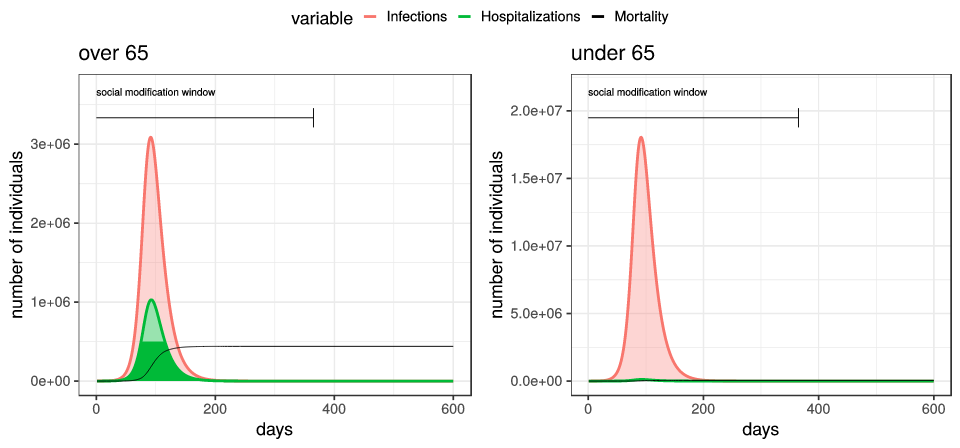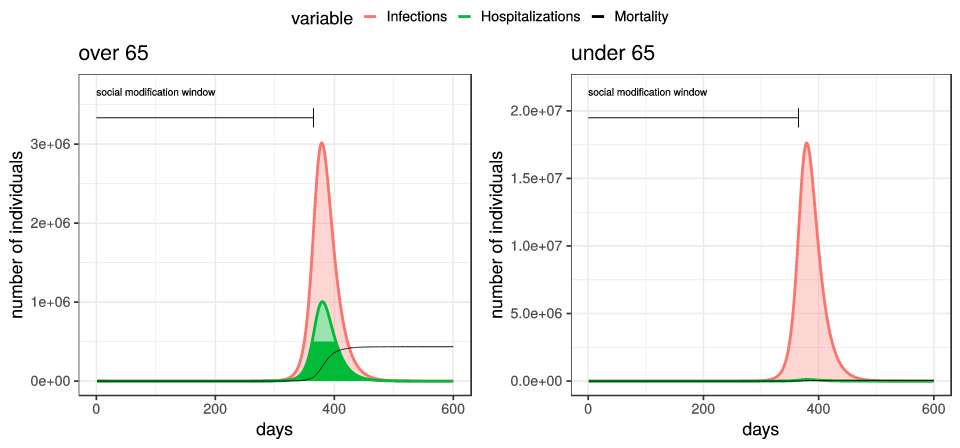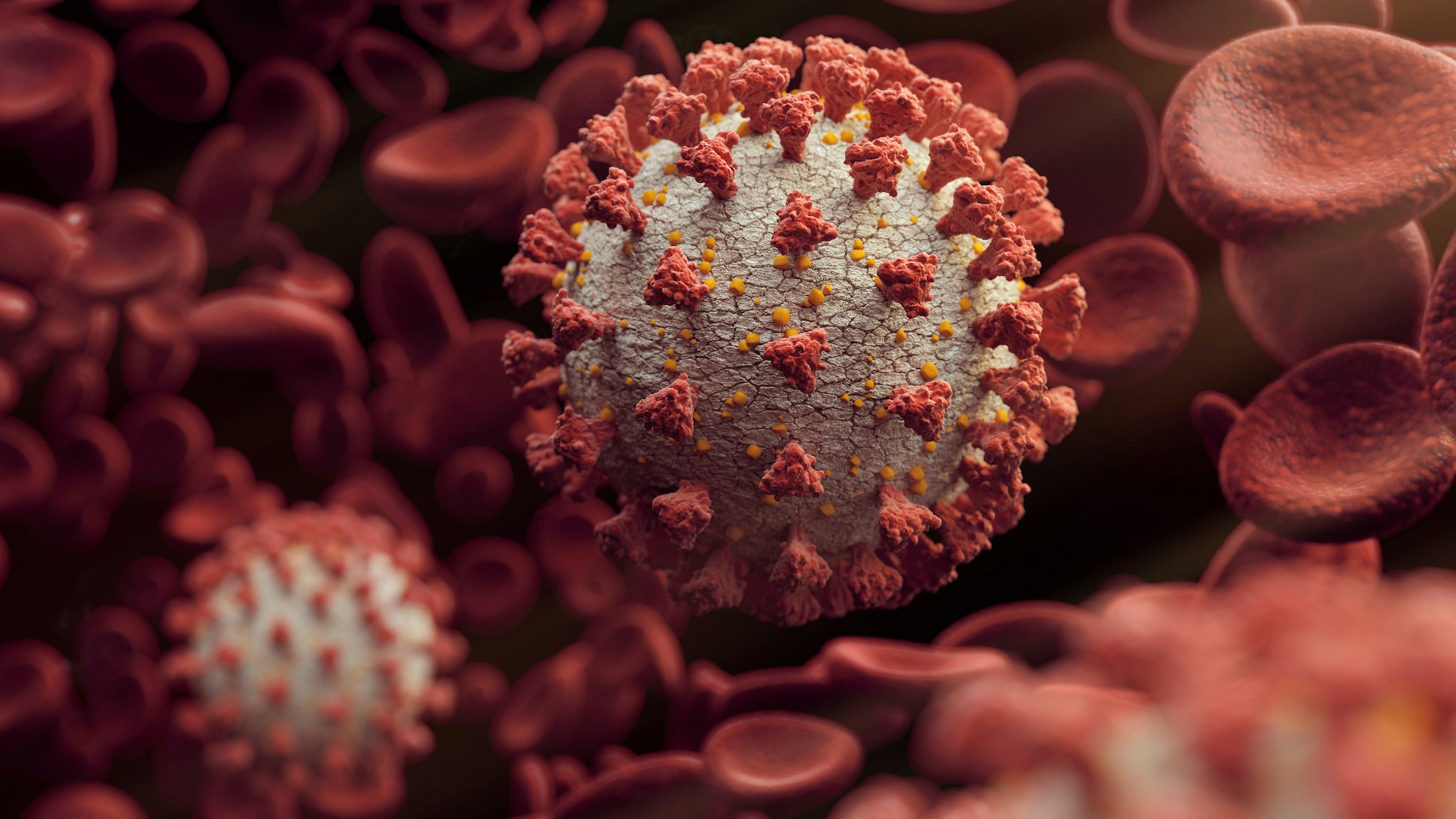A recently posted op-ed by two professors — an associate professor of Mathematics at Carnegie Mellon University and an assistant professor of Molecular Biology at the University of Pittsburgh — calls for greater “honesty in pandemic modeling,” which, they suggest, too often conceals the fact that after lock-downs and other extreme social distancing measures are lifted, the number of infections will rapidly rise again.
The problem, Carnegie Mellon’s Wesley Pegden and Pittsburgh’s Maria Chikina explain in an analysis posted on Medium Sunday, is that many of the models that have been shaping the narrative on COVID-19 mitigation efforts only present “the effects of mitigations over a limited time-frame,” when “most of the impact of the epidemic would occur outside of that time-frame.” In so doing, the models appear to show that extreme social distancing measures for a given period of time will save a large number of lives, but they often fail to show what happens after the measures are lifted (emphasis theirs):
There is a simple truth behind the problems with these modeling conclusions. The duration of containment efforts does not matter, if transmission rates return to normal when they end, and mortality rates have not improved. This is simply because as long as a large majority of the population remains uninfected, lifting containment measures will lead to an epidemic almost as large as would happen without having mitigations in place at all.
The professors acknowledge that there can be real benefits in using mitigations efforts as a form of “delay tactic.” “For example, we may hope to use the months we buy with containment measures to improve hospital capacity, in the hopes of achieving a reduction in the mortality rate,” they write. “We might even wish to use these months just to consider our options as a society and formulate a strategy.”
However, they argue, “mitigations themselves are not saving lives in these scenarios; instead, it is what we do with the time that gives us an opportunity to improve the outcome of the epidemic” (emphasis theirs).
In their analysis, the professors point to a few popular examples of models claiming to show extreme social distancing measures, including lock-downs, saving a large number of lives. One of these is a recent model publicized by Nicholas Kristof of The New York Times. The overarching message of the model is that “social distancing for 2 months instead of 2 weeks could dramatically drop the number of COVID-19 infections,” Chikina and Pegden write.
But what happens when you look at the number of infections in the months after the window of time shown in the model? By October, the professors calculated, Kristof’s model would show a 50% increase in the number of infections if no extreme measures had been imposed in the first place:
Two months of mitigations have not improved the outcome of the epidemic in this model, it has just delayed its terrible effects. In fact, because of the role of weather in the model presented in the Kristof article, two months of mitigations actually results in 50% more infections and deaths than two weeks of mitigations, since it pushes the peak of the epidemic to the winter instead of the summer, whose warmer months this model assumes causes lower transmission rates.
The professors found the same pattern of simply pushing the spike in cases forward in their own models on “epidemic trajectories for COVID-19 assuming no mitigations at all, or assuming extreme mitigations which are gradually lifted at 6 months, to resume normal levels at 1 year” (graphs below via Chikina and Pegden):


“Unfortunately, extreme mitigation efforts which end (even gradually) reduce the number of deaths only by 1% or so;” they write, “as the mitigation efforts let up, we still see a full-scale epidemic, since almost none of the population has developed immunity to the virus.”
So is short-term modeling useless and are mitigation efforts only delaying the inevitable? No, the professors explain, but both need to be presented and approached with honesty and transparency:
In particular, we suggest that no model whose purpose is to study the overall benefits of mitigations should end at a time-point before a steady-state is reached. This is not the same as saying that modelers must assume that the epidemic remains a threat until herd immunity is reached. Indeed, it is perfectly reasonable to model the effects of mitigation strategies if we assume that a vaccine will be available in 18 months, or that mortality 6 months from now could be reduced by new treatments, or that hospital capacity might be increased with the time bought by mitigations. But these are all assumptions that can and should be made explicit and quantitative in a model that attempts to estimate effects on overall mortality. Without making assumptions explicit, it is impossible to debate whether they are reasonable, or to estimate the sensitivity of the model’s conclusions.
Read Chikina and Pegden’s op-ed here.
Related: Study: Coronavirus Death Rate Lower Than Previously Reported

